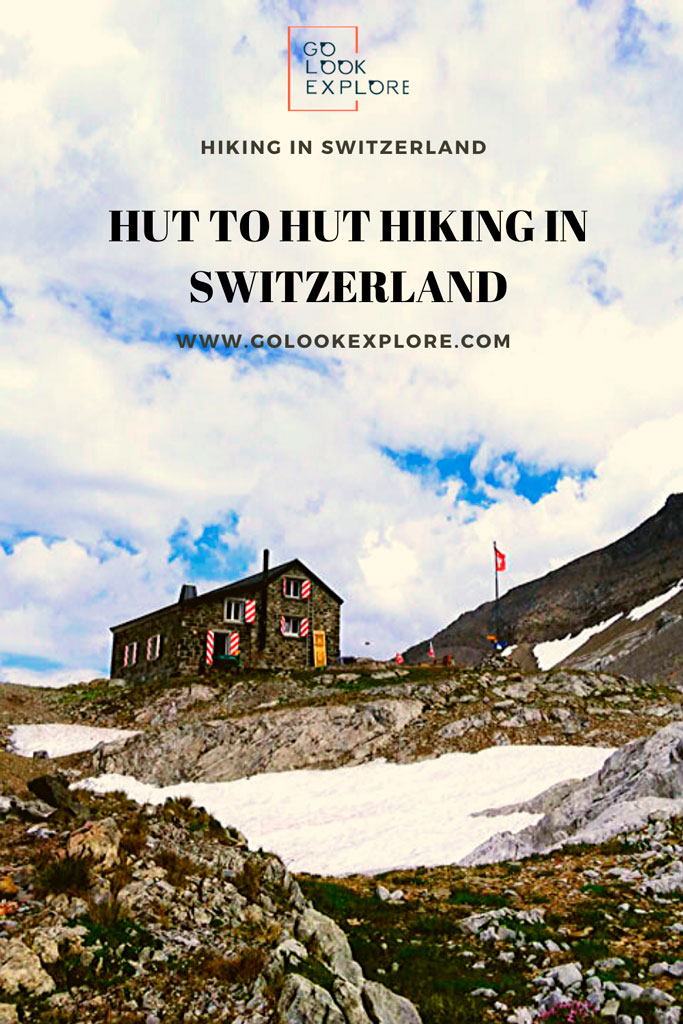Hut to hut hiking in Switzerland – such experience can be an adventure of your lifetime. Switzerland has maybe the most amazing mountain views in the Alps, Europe or even the world. So should you do such a trip? 100%! You are not going to regret it.
Switzerland has thousands of kilometres of hiking trails, hundreds of huts in different valleys and peaks: some are at 1500 m altitude, some are at 3400 meters altitude, you will get to see amazing rivers, waterfalls and many many other things Switzerland has to offer.
Planning is key to have a great time on this adventure and in this article we are going to have a look at all the possible things you must consider before embarking on this hut to hut adventure in Switzerland.
Table of Contents
When to do a hut to hut hiking in Switzerland?
First of all, you must consider the time of the year. Straight away – I suggest the summertime. The best time to do such a thing is Mid-June till Mid-September. Why? Because simply just then all the mountain paths are snow-free and you won’t slip on some rocks and get an injury. BUT you must consider this – if you go up more than 2800-3000m – snow can still be your companion.
I did one hike, mid-July up to Glacier 3000 and got quite a lot of snow, check out this blog entry: Hiking in Switzerland July.

You can still do a hut to hut hiking in other times, but you must consider that it can be dangerous OR you can choose huts which are not that high – up to 1500m, in wintertime – up to 1000m. In wintertime, quite a lot of huts are simply closed or even impossible to reach because of too much snow. You can reach most of the huts with snowshoes in Switzerland or skis, but still, they can be left with no one inside.
So, let’s plan it for summer. It’s gonna be much safer, much easier, more huts are open.
Where to find the Swiss huts?
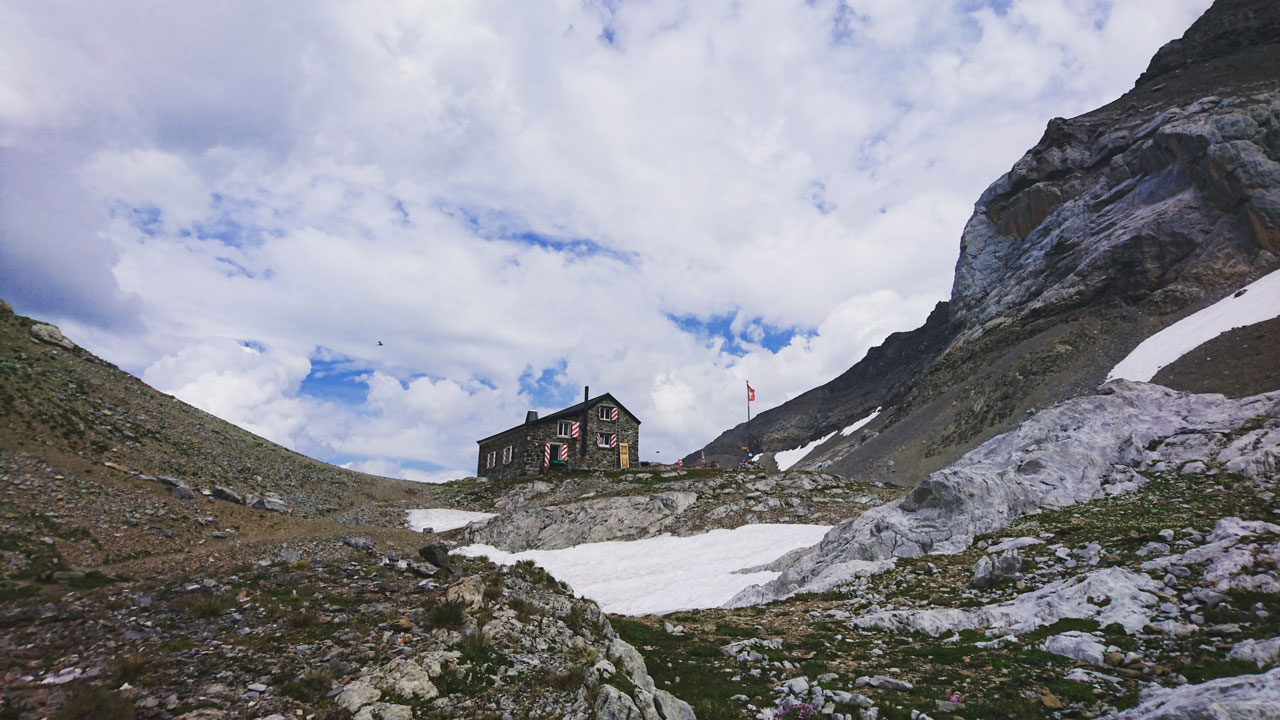
Switzerland has loooooooooots of huts. Hundreds.
You can find them all here: Hiking Swiss Alps huts. It’s an official Swiss website with all the Hiking Swiss Alps huts in Switzerland. You can search for them by region, place, city or anyhow you wish. As well, you will find here a complete Swiss Alpine huts map.
Once you find a hut, you can see when it is open, what it offers (food, hot food, toilet, separate room, any other cool stuff).
How many places hut have (mostly they are pretty big and fit quite many people, so it can be crowded, especially on weekends). Basically, you can find all info you need about the hut.
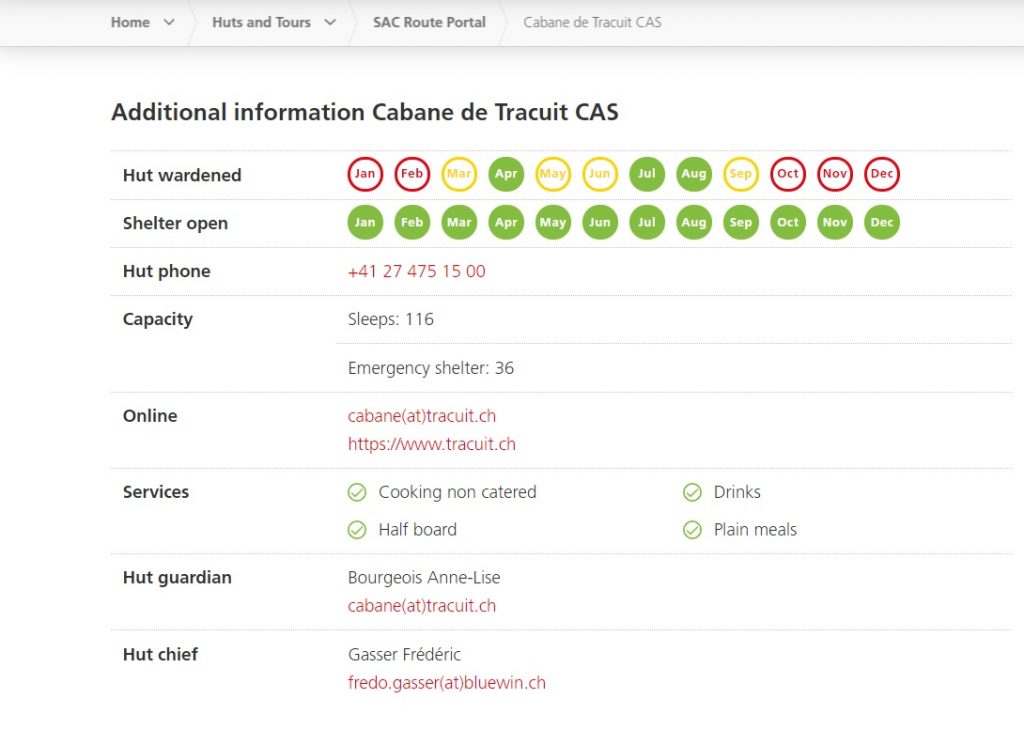
On that website, you can as well find quite many offers and suggestions where to hike, what trails you can find, and so on. So it’s pretty well made, I like that website. It’s good.
Which Hiking Trail to Take?
Ok, so now you open that map with all the Swiss huts. Now, choose the place you would like to hike (maybe closer to your airport, train station). If you want to see the highest and most beautiful places I would suggest looking for huts in places mostly close to Italy and France. Closer to the border. There are most of the most beautiful peaks are sitting. So it can be next to Lugano, Davos, Sion, St. Moritz. In the middle: around Grindelwald, Interlaken, Disentis. One very famous place near St. Moritz and these places is the Engadine Valley. This valley is full of mountains, huts, peaks, and all other amazing Swiss nature stuff.
Another very amazing place to consider for your start of hut-to-hut hiking in Switzerland is many of Swiss mountain passes. You can get very high with a car, bus or train and start your hike at 2000 meters altitude or even higher, mountain passes are mostly surrounded by many huts, for example: Sustenpass, some you can reach by train like Oberalp Pass, and some of them are very famous and even James Bond visited them: Furka Pass. You can check the list of most beautiful mountain passes in Switzerland right here: Mountain passes in Switzerland.
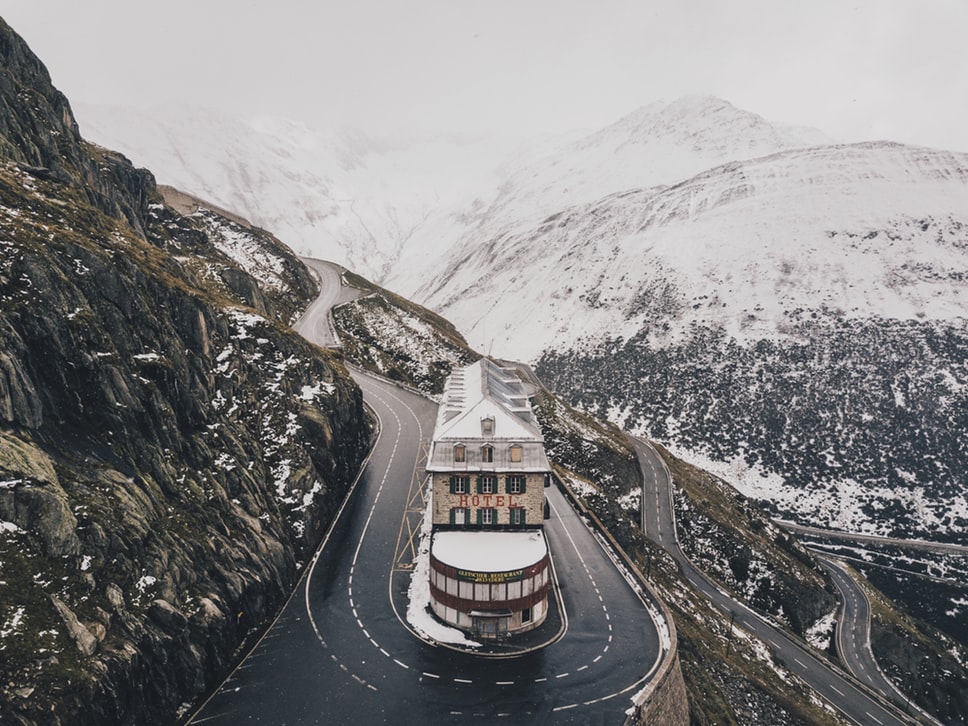
You just take several steps off the road and you are in big valleys, majestic peaks, and in a breathtaking nature. On some mountain passes, you can leave your car for a few days, so it is a good starting and ending point.
Depending on the days you have time to hike, choose as many huts as you can. If you are going to hike for 5 days: 5 huts. Simple 🙂
NOW. Sometimes huts can be far away from each other, sometimes very close. I am not sure what is your experience in the mountains, but I would not suggest picking hut to hut distance more than 15 km. If you are an experienced hiker/runner/mountaineer – go nuts 🙂 If not experienced – be very aware. 15 km on a flat road in your neighborhood is not the same in the Swiss Alps.
Especially if you are going to gain more than 1000 m. It can be excruciating hard. If you do not pace yourself, take too much stuff (too heavy bag), mountains can kill you even after 3 km. Believe me, I was there a few times. I start too fast, 3 km into the hike (600 m elevation gain) and I am breathing for my life.
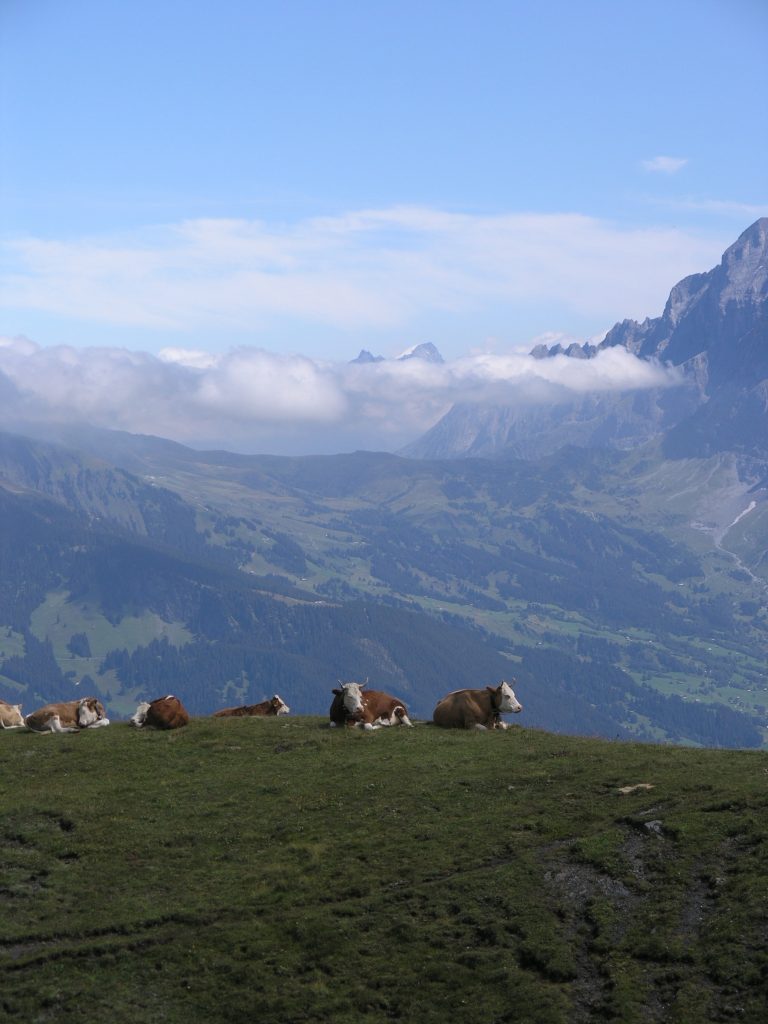
So my suggestion – not more than 15 km.
What to do if a hut from your hut last night is just 5 km from you? No worries. Hike to your hut, leave your stuff there and enjoy a hike around the place. Most of the huts sit in amazing places with loooooooots of hiking trails. It will be no problem to find a place to hike around. As well, if there are many people in the hut – make some friends 🙂
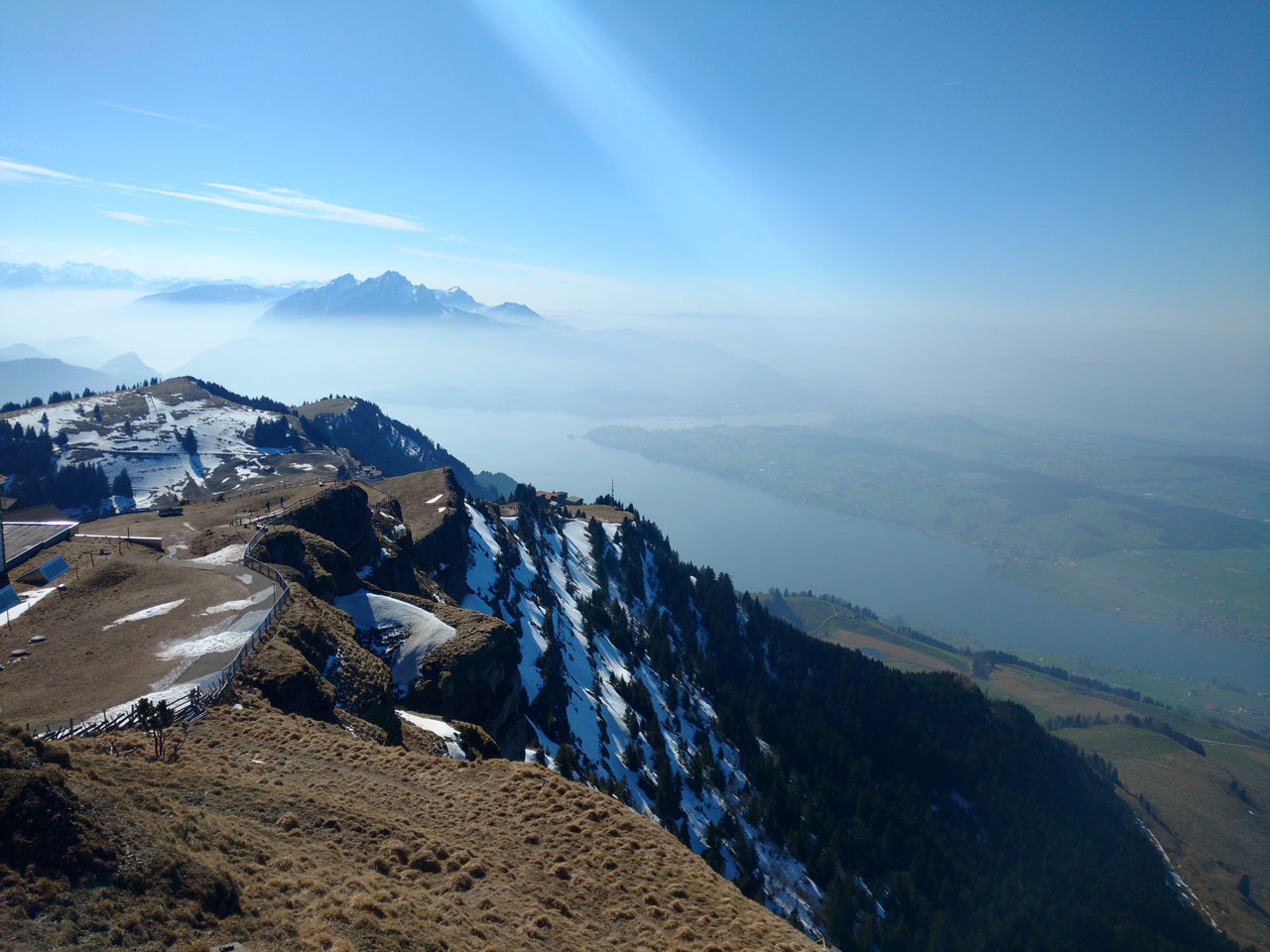
You can even choose all your huts 5 km from each other. Or do a round trip and come back to the first hut in the end. Swiss alps are full of valleys, peaks, so don’t worry, the scenery is gonna change all the time. It’s not like hiking 5 km in a flat place, in 5 km your scenery can change a loooot 🙂 Especially if you are going up.
The elevation gain in the Swiss Alps
Now, the elevation gain. That’s the thing which causes most of the breathing problems and muscle pain. It can get pretty hard. Some mountains are extremely steep and you may think that your backpack will push you down the mountain 🙂 So here as well: planning is the key. All the huts on the website I gave a link have elevation information AND information on how to get there. It has a starting point elevation and the finish elevation.
You can calculate the difference. Be aware: if the hut you sleep tonight is at 2000 m and another hut is 2100 m, it doesn’t mean that you gonna gain just 100 m, it can mean that you may go down a loooooot and then climb up. So always look for information. Plan into the next day. See where you have to hike, what are elevation differences, calculate it. Be clever. It’s mountains. They are no joke.
Now. How much elevation gain is ok for a day? I would say up to 1500 m. Not more. 1000 m is nice, 1500 m is doable, 2000 m can kill you. I did once 2200 m in 6 hours, 27 km in total distance, I was a very tired man after that. And there’s no pleasure if it’s your holiday. You don’t wanna be dying one day and then continue your trip the next day. If you are not a mountain goat, go to mountains just from time to time, keep it simple – 1000 m is really enough.
Hut to hut hiking in Switzerland – what to take on such a hike?
Simply said: as little as you can. Don’t pack a couple of jeans, a few sweaters, three books and so on. Be clever. Now, in the mountains weather can change as fast as politicians’ opinions, so you must be ready for crazy weather patterns. Even in mid-july on a sunshiny day you can get hard winds and cold rain – and in such conditions, you can get cold in minutes. I don’t want to scare you, but people die every day in Switzerland in the mountains. Why? Because they think they can do it with shorts and sneakers. Once again: be clever.

You must for sure take your Goretex jacket. This is crucial for your success. The weather can change immediately even in the summertime and sunny weather becomes into a rainstorm in minutes. For a carefree Swiss Alps adventure, you must have the best you can get so it saves you from terrible experiences. I was once hiking up to Kleine Scheidegg in Grindelwald and was having very nice sunny weather for two hours, once I reached the mountain pass, the temperature dropped to 7 degrees by Celsius and it started to rain and got very windy. And God I was sorry that I didn’t have my Goretex jacket then. I even didn’t consider taking it as it was +25 degrees in Grindelwald. Live and learn.
If you have Goretex pants – even better.
Take two light sweaters (it can get cold). Take two just because one can get wet during your hike and you do not really want to spend your evening with a wet sweater at 2000 meters altitude in a hut or on a terrace of the hut. Just do not take any heavy sweaters.
Take two pairs of shoes (there’s nothing more demotivating than putting your tired feet into a wet shoe in the morning). One pair must be goretex shoes for the same reason as for a jacket. The weather conditions can sometimes get really bad. Other pair of shoes can be light running shoes which is very nice to wear after a long hike.
Take underwear (don’t go crazy with 6 pairs, you will be able to wash it in the hut).
Take good socks (a couple of pairs). I would recommend good quality socks which can absorb the humidity real good, so that way you are going to avoid blisters.
Take a good and comfortable backpack (the wrong backpack is the number 2 thing that can kill you in a long hike (number 1 is the wrong shoes)). You should have a water-resistant backpack – you really really do not want to come to a hut with wet sleeping bag and all your clothes.
I have prepared a list of articles on how to prepare for a long hike here: Hiking tips. It was for a Camino de Santiago hike, but most rules apply and are the same.
As well, always have water. Water is very important in hard hikes when you climb. Be aware that Switzerland can be very hot in summer. You will not spend all your time at 2000m, so water can disappear very fast 🙂
Take just the most important stuff, nothing unnecessary – too much stuff can kill your back and legs. Be clever while planning it. If you have any questions about what to take – let me know. I will help 🙂 I have a lot of bad experience and I learn from my mistakes.
What to bring to the Swiss huts
Most of the huts are very well prepared, even though some of the huts very high up can be pretty stoic with just basics like mattress and nothing else: toilet outside, no heating, no running water, and so on. If you consider huts very high up, maybe around 3000-4000 meters high, you should expect such spartan conditions. Especially if it’s called BIWAK 🙂 Just have a look at this exceptional hut: Mischabeljochbiwak hut. This is an ultimate mountaineer dream to get into such hut. It looks pretty dangerous from the pictures 🙂 But even they can provide blanket and heating (with wood).
Ok, so to be always safe and avoid any mishaps you should have this stuff:
- Sleeping bag (it gets pretty cold even in summer up in the mountains, so I would take a sleeping bag where comfort temperature is around 0 degrees). It shouldn’t weigh more than 1 kilogram. A good sleeping bag is a key to your good sleep in a hut, because if you have a sleeping bag which is not good in low temperatures, you are going to wake up because of cold and it will be very very hard to sleep in again. Trust me, I have learned it the hard way. It is terrible to wake up at 5 AM after a long hike, not be able to sleep again, because it is freezing cold and then knowing that you have to hike the whole day the next day. I had many such nights as it is not easy to get a new sleeping bag in the middle of your adventure.
- Cutlery and a cup. Take plastic cup and cutlery as it weighs very little and is easy to stuff into the backpack. It’s best to take some kind of knife/fork/spoon tool where everything is in one.
- Earplugs. You may sleep with many people in one room, so to avoid sleepless nights, take it. You never know how tired are other people and how hard they snore 🙂
- Soap. You may need to wash some of your stuff, so soap is very good to have. I would maybe even take liquid soap, it’s better to use and carry around than a bar of soap, just be sure to close the lid really well. I have learned it the hard way as well.
- Shampoo. Not all the huts have a shower, but in the once they have, you will definitely want to wash after the all-day hike. Take a small tiny bottle of shampoo.
Once again, most of the huts will have that basic stuff like cutlery and cups, but if it happens that they don’t, it will be very uncomfortable even to drink water or make food 🙂 I highly recommend while making a reservation in the Swiss huts to ask all the questions, because not all information is stated on the website:
- Do you have a toilet?
- Do you have a kitchen where I can cook myself?
- Do you have cutlery I can use?
- Do you have mattresses or linens?
- Do you have a shower? If yes, do you have shampoo?
- Do you have separate rooms? (if they do, mostly they are pricier)
- Till when should I come into the hut? Or maybe there’s no limit.
- Do you have electricity?
- Do you have running water?
Ask all the questions which are important to you. Maybe you can ask for an easier hiking path to them (mostly all hut workers are very familiar with hiking situation around them), maybe you can ask about local cable cars, trains, buses, anything you want. Better to know it all before than to begin learning about the situation in the end of the daily hike, at night, or when you are totally tired.
Safe hut’s phone number in your contacts, you never know what happens and you may need to call them. It can as well be your best guide in the mountains when you are near to them. They can help you to orient in the area and give information about related topics.
Hut to hut hiking in Switzerland costs
While being in Switzerland the costs is probably the most important thing 🙂 Switzerland has a very high standard of living and it’s only natural that everything is quite expensive.
Now, while planning your costs you should always consider hut prices (this will be the lion part of your costs) and what they offer.
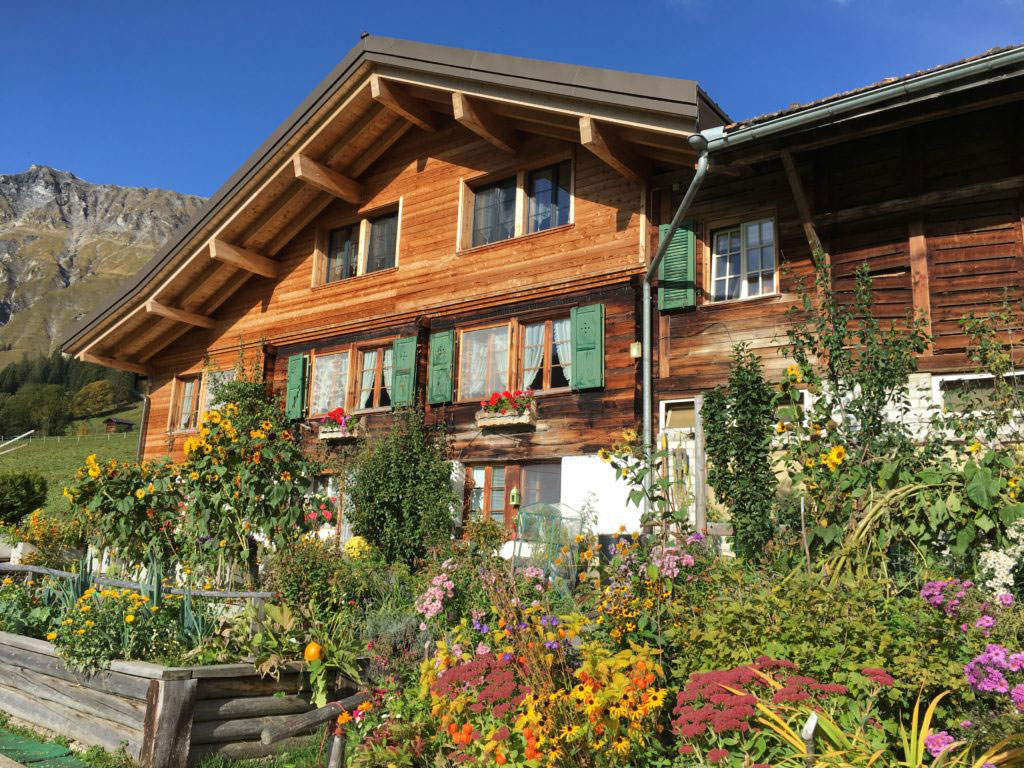
If I were you, I would probably try to spend most nights in the huts during weekdays as fewer people will be there and prices can differentiate to lower on weekdays.
There’s a pretty big variety of huts in the Swiss Alps, so the prices can be pretty different. In my experience, I think the high up big huts are mostly a bit pricier, but it’s not a rule to follow.
In some lower parts of Switzerland you can even overnight just for 20 CHF, some will ask 60 CHF or more. As well, there are some mountain hotels or Berghaus’s where you can get an overnight sleep pretty cheap as well.
Most of the huts offer the full package: bed, breakfast, supper, and so on. If you want to save some money, ask just for a bed. This way you can save quite a lot, as just a bed can cost just 20-40 CHF, but the full package can jump up to 100 CHF or more. Ask each hut you are going to spend the night on prices. Book in advance, because in summer, huts are very popular, and you don’t want to spend the night at 2000 meters outside looking to the stars, even though that sounds fantastic 🙂
There’s an Alpine club called SAC in Switzerland. It is very popular in Switzerland as they provide a lot of information to hikers and mountaineers. If you are going to do long hut-to-hut hiking in Switzerland, it’s maybe worth considering to become a member, as with membership you will get discounts in each hut. If you live in Switzerland and you are hiker, that’s even better. Most discounts are 20-40 percent, but there’s no exact number set. So if you would do 7-10 days hike hut to hut, the membership costs can pay off.
You can check all the registration information right here: Swiss Alpine Club registration.
What & Where to Eat?
In restaurants, dinner for one person can easily cost 20 CHF. Easily. Just the soup can be 9 CHF. Coffee – 5-7 CHF. The prices are not that lower in simple mountain coffee shops or village restaurants. It is not cheap.
But there’s no need to eat in the restaurants. You can buy food in the shops and make some sandwiches yourself. Now, the most popular shops are Migros and Coop, but they are pricey. The cheapest shops would be Denner, Aldi, Lidl, and Volg. Buy in bulk there (for one day at least). Volg is mostly found in small villages, others – in bigger. So if you have a chance to cross a bigger city and find these shops – buy more.

On your hiking path, you may cross many farms, very small villages, or settlements and it’s very normal that you may find some small shopping spots which are set by farmers: it can be a small shed, small house, or just a stand with some products. These are mostly farmers’ products: cheese, vegetables, fruits, milk, and so on. It varies from place to place, but it’s very cool. Most of those places have no people, you just have to put money into a jar or a box and take what you want. NOW, it’s mostly not cheap food, but I think to support local farmers it’s such a cool idea. You may get a small piece of cheese for 5 CHF, but just think about it: it’s probably made right there, in the mountains, milk is coming from those beautiful cows (which makes Swiss alps so gorgeous) in the meadows and it’s made by a local farmer. That is such a cool idea to support. And most of the time that cheese is very delicious. So I would encourage you, at least once in your hike, buy it and support local people 🙂
I would highly suggest having all your equipment and clothing before you come to Switzerland, as in many small villages you may even find a clothing shop or something very specific. Simply clothing is not that expensive in Switzerland, so if you would need to buy socks or a t-shirt, you can definitely find it for a reasonable price, but I just hope, that in a few days hike, you won’t need to buy something too expensive.

As well, I highly suggest buying accident insurance (in your home country) before this trip. You never know. You may slip, you may get hurt, anything can happen. You must be always very careful in the mountains. But if anything happens: better have that insurance as medical expenses in Switzerland are extremely high.
Emergency in the Swiss Alps
I hope you will never need these emergency numbers, but you never know. Better be prepared than try to find the right phone numbers in the mountains (be aware, that in some mountain valleys you will have zero connection).
So the numbers:
Police: 117
Ambulance: 144
Swiss rescue: 1414
Now, the last one 1414 is maybe most important for you if you get in trouble in some pretty isolated place. If you are high in the mountains, no real roads around and you are in a bad shape, you will need a helicopter rescue. Swiss people are highly experienced in helicopter rescues, so save this number on your phone just in case if something goes wrong.
How to get to the first hut?
It all depends on how you come to Switzerland.
If you come to the airport: Zürich, Basel, Geneva – the best way to go from there is by train. Check your trains here: Swiss train schedules.
In some cases, it is better to book before, but I personally don’t do it, as you never know if the flight can be delayed or whatever happens. I must warn you again: Swiss trains don’t come cheap, but they are in fantastic shape and quality. You gonna love it, especially if you are going to cross the mountains.
Most of the small villages have train connections, so just find which village is closest to your first hut and start from there. Even in train stations, you are going to see the directions (for hikers) to quite a lot of destinations. Be aware that your hut may not be mentioned in the directions straight away (most huts are named in directions in the mountains) so as not to get lost, investigate the map around you, and look at what kind of direction you should take. The Swiss huts website as well gives a pretty good description of how to get to them: which train station to use, which direction to take, and so on. But if you don’t see any familiar or known direction, don’t go blind, have a look at the map.
Buses are not that popular to use between cities, but your starting point may be in the place where is no train station. First of all: check what the hut information is. They will write to you exclusively about which bus to take, where is the bus station and so on. If it’s not written, contact the hut, they will provide you with all the information.
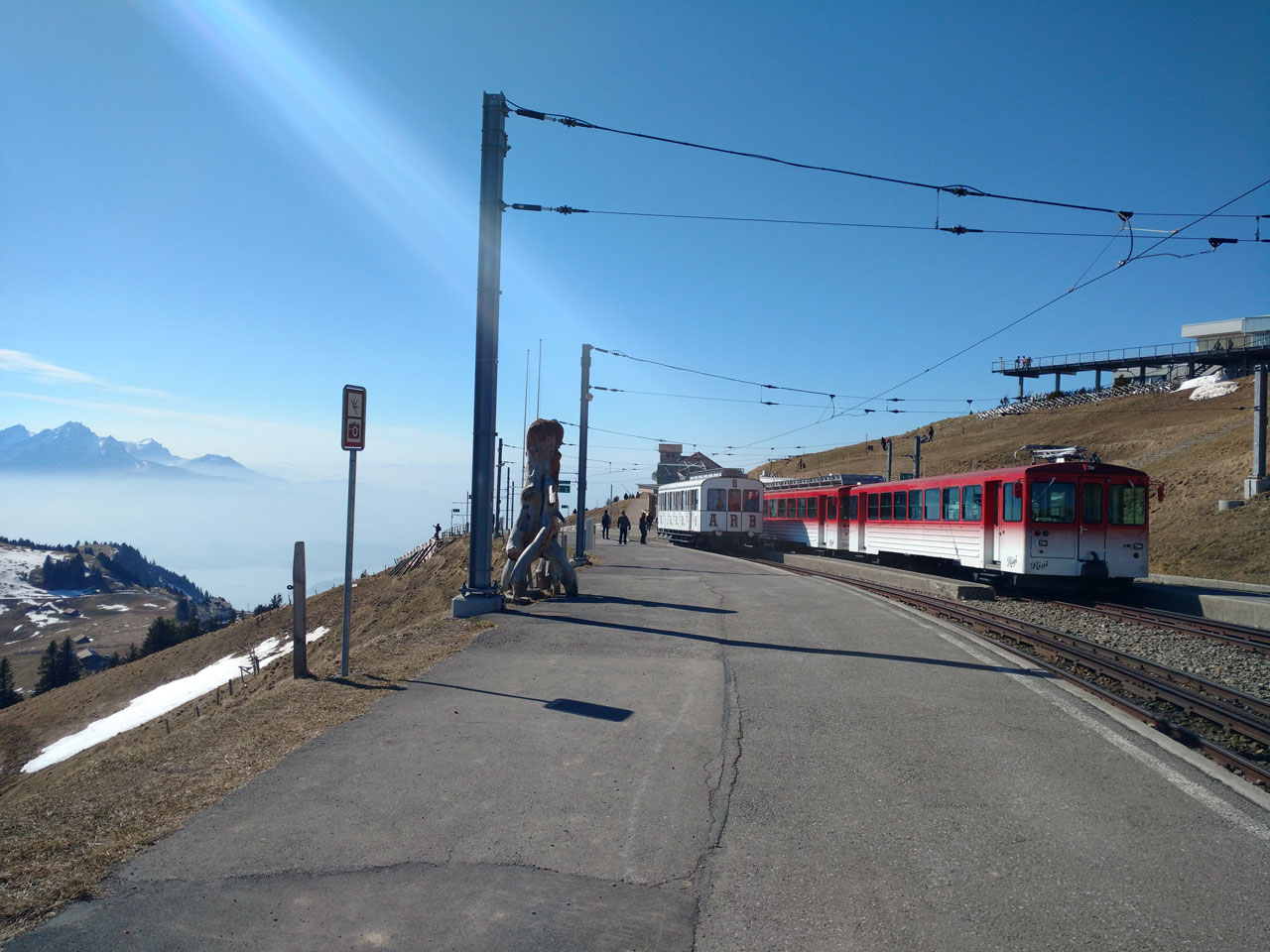
If you come to Switzerland in your car, I would suggest going as close as possible to your destination and park there for a few days. Most of the parking places offer long term parking. It can get pricey, especially for a few days. I would suggest you to investigate this before coming here, as quite a lot of towns and villages have their own websites and provide information about parking.
Be aware, that free parking even in small villages can be unavailable. Especially for a few days. People will straight away recognize a foreign car parked in their territory and can get suspicious in a few days. You don’t want to see your car towed away after an amazing adventure. I really really highly recommend not to leave your car in someplace (which seems free to park) for a few days in Switzerland (it is not that it’s going to be broken or something, but it can really be towed away). Swiss people like to park very correctly and pay for that parking.
The last, but not least, not that popular option is hitchhiking. It is very unpopular in Switzerland. I almost never see people hitchhiking in Switzerland, but I actually did it once in 2011 (ok, a long time ago), but it was very easy. People in Switzerland are friendly and like to help. They mostly consider that you may miss a bus or train. I was once even hiking at night, it was already dark at 22.00 in Davos and a guy helped me straight away. What is bad about hitchhiking – it is hard to plan. You never know when you will get to point B and so on.
In my opinion, the best choice is the trains. You are gonna love Swiss trains. It’s fast, cool, and reliable.
Popular hiking routes in Switzerland
Switzerland has thousands and thousands of kilometers of hiking routes. You can actually be in any city and see the hiking routes directions. You can start from a city center, follow the directions and walk out of the city, to the forests, to the mountains and continue till the border.
There are some very long and popular routes: national routes (goes through all Switzerland), regional routes (goes through canton), local routes (goes around some cities or next to cities) and so on. The only problem: they are all cool and it’s hard to choose. Check out this amazing website which offers a lot of information about each route: Swiss hiking routes. You can get pretty detailed information about the route: length, altitudes, altitude gains (check stages), a very good map, and even train timetables. You can find everything you need. It is a very good planning tool for you.
In the website as you well you will find national routes (the ones which cross all the country, but to do that you would need at least 14-20 days), regional routes (these are mostly 2-5 day routes) and local routes (shorter one-day routes). I would suggest to pick up the regional routes and start digging. You will find a lot of information and that will help you a lot.
For example: Via Valtellina route – it is 135 kilometers, consists of 7 stages (so 7 days, up to 20 kilometers each day). You will find detailed information about each day trail; how to get to the starting and endpoint. Perfect.

Now, some very popular routes are like Haute route (goes from Chamonix (in France) to Zermatt), Bernina route, Via Alpina, and so on. It’s crazy how much they have here. But if I were you, I would definitely consider going through higher mountains, so you can see much more and the views are stunning. You should investigate these maps as much as you can so you find something perfect for you. Just one note: if a route goes higher than 2000m – it’s almost 100% chance that it is going to be breathtaking 🙂
What else to consider before embarking hut to hut hiking?
I would say that the most important thing is planning here. Look through all maps, all destinations, all distances. You don’t want to get lost or extremely tired. As I said before, mountains can be pretty tricky: you are in a good mood, feeling healthy, the sun is shining -> you hike 10km, ascend 1000m, it starts to rain, the wind is strong, it is extremely cold, you feel tired, hungry and miserable. Always be aware of your own health and strength. Maybe 5km a day is enough? If you feel good after reaching a hut – hike around it. Always take it easy.

Know your maps, know your surroundings, have water, have food, have good clothing. You may even want to consider taking a whistle (it is used when people are missing and you can whistle so people can locate you) or some small survival kit, some medicine, extra batteries, and so on.
I really hope that you can have an amazing time in the Swiss Alps. Believe me – it’s beauuuuuuutiful. It’s amazing. If you plan well, follow all the steps, the execution of such an adventure is going to be amazing 🙂 Have the time of your life!
If you have any questions for me: let me know. I will be happy to help.
Do not forget to follow me on:
Instagram: @golookexplore
Facebook: golookexplore
Youtube: golookexplore
Pinterest: golookexplore
Pin it for later